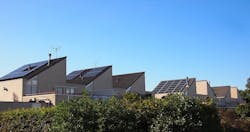Flawed modeling to blame for green buildings failure to live up to hype on energy efficiency
By Peter Fabris, Contributing Editor
Flawed energy efficiency modeling is the reason many green buildings fail to live up to expectations on energy efficiency, according to a U.K. researcher.
David Coley, a University of Bath specialist, led a team that surveyed 108 architects, engineers, and energy consultants who routinely use energy performance models. They asked participants to look at a typical British semi-detached home recently updated to meet current building codes. Then they asked test subjects to rank which improvements made the most difference to energy performance.
Their answers didn’t match up with reality, suggesting a performance gap between modeling and the real world. There were cases where the modelers produced a savings measure that was more than the energy use of the house.
Energy models showing unreasonable results are evident at the preliminary stage on half of projects going through the LEED certification process, according to a U.S. Green Building Council official. Designers have a tendency to accept outputs without evaluating the reasonability of the results, she said.
Part of the reason for the performance gap is that modelers do not usually go onsite to see how the building operates and compare that to the design. Typically there is no expectation that they’ll even talk to the building manager at year one and ask how energy usage compares with the original model.
